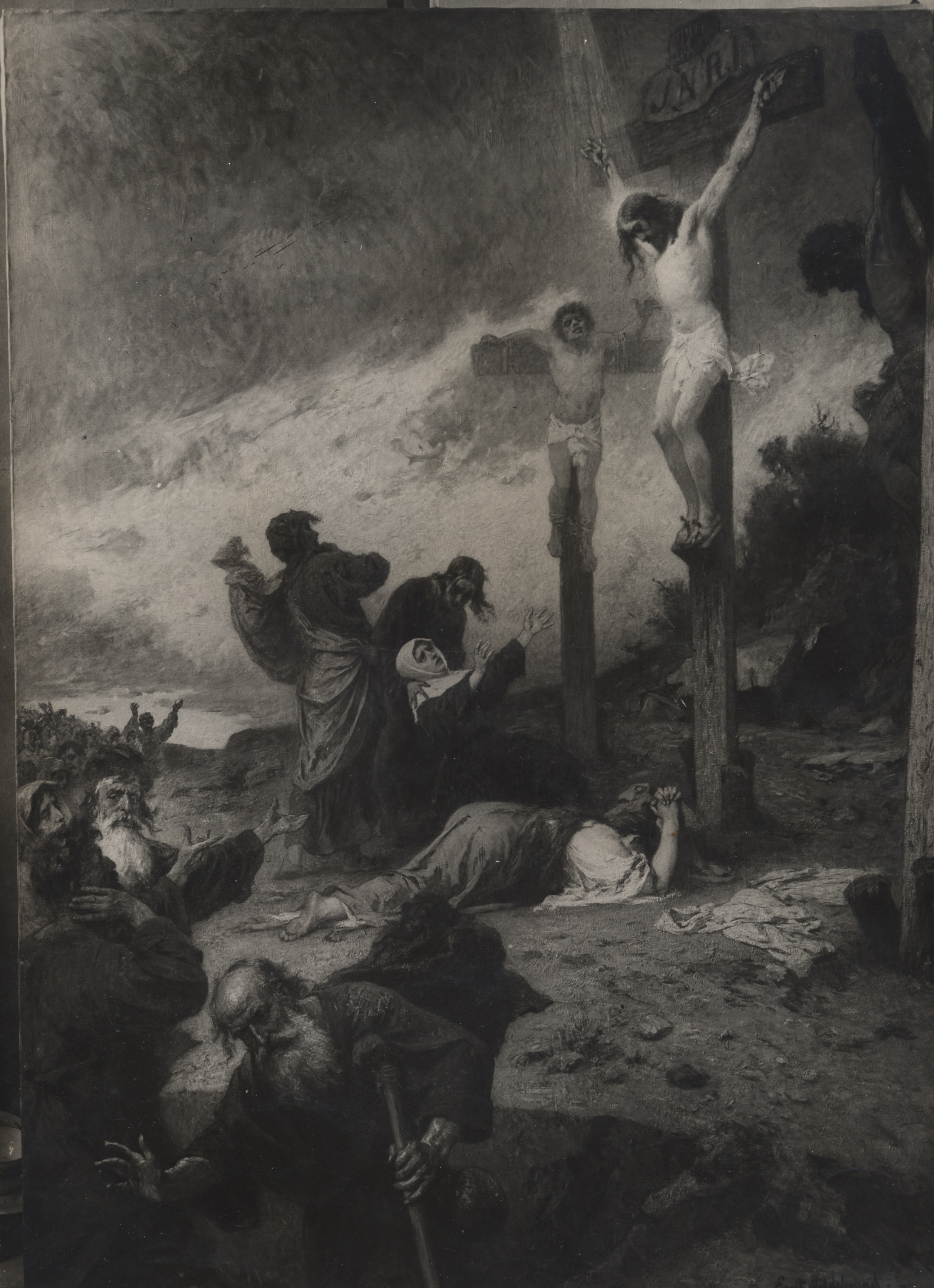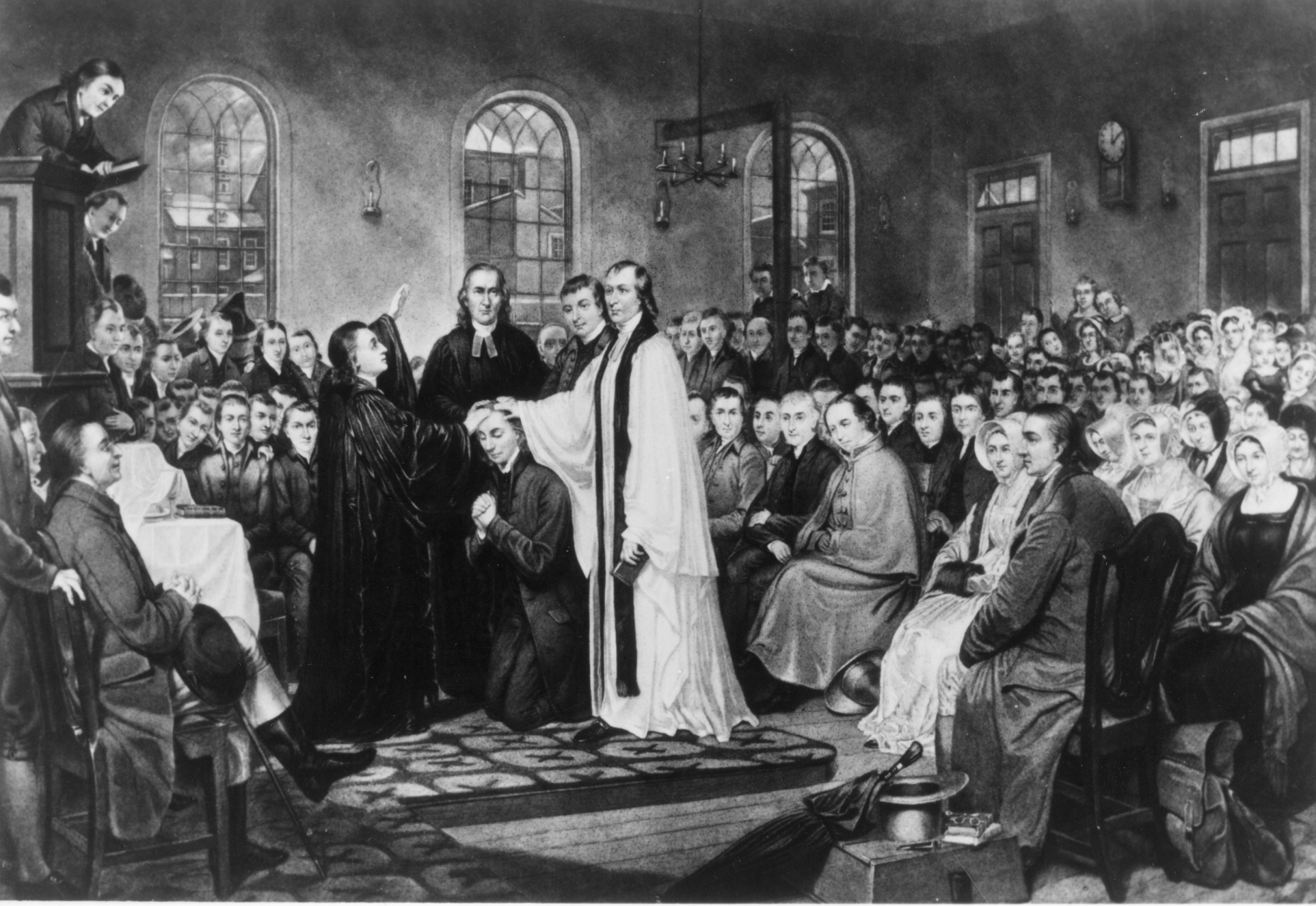|
Interpreter's Bible Series
The Interpreter's Bible series is a biblical criticism series published by United Methodist Publishing ( Abingdon/ Cokesbury) beginning in the 1950s. Each volume covers one or more books of the Old Testament (including the Apocrypha) or the New Testament. Between 1994 and 1998, an updated 12-volume series was published by Abingdon Press as ''The New Interpreter's Bible (NIB)''. The New International Version and the New Revised Standard Version The New Revised Standard Version (NRSV) is a translation of the Bible in American English. It was first published in 1989 by the National Council of Churches, the NRSV was created by an ecumenical committee of scholars "comprising about thirt ... are used in parallel as translations and the series contains the work of 94 authors and 14 consultants. References External links Digital version Biblical criticism Study Bibles {{biblical-studies-book-stub ... [...More Info...] [...Related Items...] OR: [Wikipedia] [Google] [Baidu] |
Biblical Criticism
Modern Biblical criticism (as opposed to pre-Modern criticism) is the use of critical analysis to understand and explain the Bible without appealing to the supernatural. During the eighteenth century, when it began as ''historical-biblical criticism,'' it was based on two distinguishing characteristics: (1) the concern to avoid dogma and bias by applying a neutral, non-sectarian, reason-based judgment to the study of the Bible, and (2) the belief that the reconstruction of the historical events behind the texts, as well as the history of how the texts themselves developed, would lead to a correct understanding of the Bible. This sets it apart from earlier, pre-critical methods; from the anti-critical methods of those who oppose criticism-based study; from the post-critical orientation of later scholarship; and from the multiple distinct schools of criticism into which it evolved in the late twentieth and early twenty-first centuries. The emergence of biblical criticism is ... [...More Info...] [...Related Items...] OR: [Wikipedia] [Google] [Baidu] |
United Methodist Church
The United Methodist Church (UMC) is a worldwide mainline Protestant Christian denomination, denomination based in the United States, and a major part of Methodism. In the 19th century, its main predecessor, the Methodist Episcopal Church, was a leader in evangelicalism. The present denomination was founded in 1968 in Dallas by union of the Methodist Church (USA), Methodist Church and the Evangelical United Brethren Church. The UMC traces its roots back to the Christian revival, revival movement of John Wesley, John and Charles Wesley in England, as well as the First Great Awakening, Great Awakening in the United States. As such, the church's theological orientation is decidedly Wesleyan theology, Wesleyan. It embraces Christian liturgy, liturgical worship, Holiness movement, holiness, and evangelical elements. The United Methodist Church has a Connectionalism, connectional polity, a typical feature of a number of Methodist denominations. It is organized into Conferences in Meth ... [...More Info...] [...Related Items...] OR: [Wikipedia] [Google] [Baidu] |
Abingdon Press
Abingdon Press is the book publishing arm of the United Methodist Publishing House which publishes sheet music, ministerial resources, Bible-study aids, and other items, often with a focus on Methodism and Methodists. History Abingdon Press was begun in the early 1900s by the Methodist Church, with headquarters in New York City. The name of the imprint is a reference to the town of Abingdon, Maryland, location of the Methodist university Cokesbury College.Alan K. Waltz"Abingdon Press," in ''A Dictionary for United Methodists.'' New York: Abingdon Press, 1991. Cited in United Methodist Church: Glossary: Abingdon Press, www.umc.org/. In 1923 the Methodist Episcopal Church, South adopted the name Cokesbury for its own publishing concern, with headquarters in Nashville, Tennessee. When the northern and southern branches of the Methodist Episcopal Church reunified in 1939, the name Abingdon-Cokesbury was chosen as the name of publishing house of the unitary Methodist Church ... [...More Info...] [...Related Items...] OR: [Wikipedia] [Google] [Baidu] |
Cokesbury
Cokesbury is the retail division of the United Methodist Publishing House. Based in Nashville, Tennessee, Cokesbury serves as an agency of the United Methodist Church but serves also as an ecumenical resource provider to other denominations. Origins The history of the United Methodist Publishing House dates back officially to 1789 as its colophon and official trademark bear testimony. Unofficially, however, there were prior efforts in American Methodist publishing as far back as 1740. By 1775, American printers had issued over 300 distinctly Methodist publications, though largely without John Wesley's own approval. The most systematic printing of Methodist resources came under the actions of Robert Williams, a British preacher who had recently come to America for a fresh start in 1769. The controversy surround the printing and selling of Methodist resources in America under Williams helped solidify the need for a Methodist publishing and distribution policy and in America, as ... [...More Info...] [...Related Items...] OR: [Wikipedia] [Google] [Baidu] |
Old Testament
The Old Testament (OT) is the first division of the Christian biblical canon, which is based primarily upon the 24 books of the Hebrew Bible, or Tanakh, a collection of ancient religious Hebrew and occasionally Aramaic writings by the Israelites. The second division of Christian Bibles is the New Testament, written in Koine Greek. The Old Testament consists of many distinct books by various authors produced over a period of centuries. Christians traditionally divide the Old Testament into four sections: the first five books or Pentateuch (which corresponds to the Jewish Torah); the history books telling the history of the Israelites, from their conquest of Canaan to their defeat and exile in Babylon; the poetic and wisdom literature, which explore themes of human experience, morality, and divine justice; and the books of the biblical prophets, warning of the consequences of turning away from God. The Old Testament canon differs among Christian denominations. The Ea ... [...More Info...] [...Related Items...] OR: [Wikipedia] [Google] [Baidu] |
Apocrypha
Apocrypha () are biblical or related writings not forming part of the accepted canon of scripture, some of which might be of doubtful authorship or authenticity. In Christianity, the word ''apocryphal'' (ἀπόκρυφος) was first applied to writings that were to be read privately rather than in the public context of church services. Apocrypha were edifying Christian works that were not always initially included as Biblical canon, canonical scripture. The adjective "apocryphal", meaning of doubtful authenticity, mythical, fictional, is recorded from the late 16th century, then taking on the popular meaning of "false," "spurious," "bad," or "heretical." It may be used for any book which might have scriptural claims but which does not appear in the canon accepted by the author. A related term for non-canonical apocryphal texts whose authorship seems incorrect is pseudepigrapha, a term that means "false attribution". In Christianity, the name "biblical apocrypha, the Apocrypha" ... [...More Info...] [...Related Items...] OR: [Wikipedia] [Google] [Baidu] |
New Testament
The New Testament (NT) is the second division of the Christian biblical canon. It discusses the teachings and person of Jesus in Christianity, Jesus, as well as events relating to Christianity in the 1st century, first-century Christianity. The New Testament's background, the first division of the Christian Bible, is called the Old Testament, which is based primarily upon the Hebrew Bible; together they are regarded as Sacred Scripture by Christians. The New Testament is a collection of 27 Christianity, Christian texts written in Koine Greek by various authors, forming the second major division of the Christian Bible. It includes four Gospel, gospels, the Acts of the Apostles, epistles attributed to Paul the Apostle, Paul and other authors, and the Book of Revelation. The Development of the New Testament canon, New Testament canon developed gradually over the first few centuries of Christianity through a complex process of debate, rejection of Heresy, heretical texts, and ... [...More Info...] [...Related Items...] OR: [Wikipedia] [Google] [Baidu] |
New International Version
The New International Version (NIV) is a translation of the Bible into contemporary English. Published by Biblica, the complete NIV was released on October 27, 1978, with a minor revision in 1984 and a major revision in 2011. The NIV relies on recently published critical editions of the original Hebrew, Aramaic, and Greek texts. Biblica claims that "the NIV delivers the very best combination of accuracy and readability." As of March 2013, over 450 million printed copies of the translation had been distributed. The NIV is the best-selling translation in the United States. History Beginnings In 1955, businessman Howard Long was convinced of the need for a contemporary English translation of the Bible while sharing the gospel with a business associate. He was unhappy with the King James Version that he used to communicate the gospel and was frustrated with its archaic language. He thought, "Everywhere I go, in Canada, the U.S., anywhere, there are people who would like to re ... [...More Info...] [...Related Items...] OR: [Wikipedia] [Google] [Baidu] |
New Revised Standard Version
The New Revised Standard Version (NRSV) is a translation of the Bible in American English. It was first published in 1989 by the National Council of Churches, the NRSV was created by an ecumenical committee of scholars "comprising about thirty members". The NRSV is considered a revision of the Revised Standard Version, and relies on recently published critical editions of the original Hebrew, Aramaic, and Greek texts. It is thus a revision in a series of English translations that has been identified as beginning with the King James Version. A major revision of the NRSV, the New Revised Standard Version Updated Edition (NRSVue), was released in 2021. Used broadly among biblical scholars, the NRSV was intended as a translation to serve the devotional, liturgical, and scholarly needs of the broadest possible range of Christian religious adherents. The full 84 book translation includes the Protestant enumeration of the Old Testament, the Apocrypha, and the New Testament; ... [...More Info...] [...Related Items...] OR: [Wikipedia] [Google] [Baidu] |
Biblical Criticism
Modern Biblical criticism (as opposed to pre-Modern criticism) is the use of critical analysis to understand and explain the Bible without appealing to the supernatural. During the eighteenth century, when it began as ''historical-biblical criticism,'' it was based on two distinguishing characteristics: (1) the concern to avoid dogma and bias by applying a neutral, non-sectarian, reason-based judgment to the study of the Bible, and (2) the belief that the reconstruction of the historical events behind the texts, as well as the history of how the texts themselves developed, would lead to a correct understanding of the Bible. This sets it apart from earlier, pre-critical methods; from the anti-critical methods of those who oppose criticism-based study; from the post-critical orientation of later scholarship; and from the multiple distinct schools of criticism into which it evolved in the late twentieth and early twenty-first centuries. The emergence of biblical criticism is ... [...More Info...] [...Related Items...] OR: [Wikipedia] [Google] [Baidu] |




